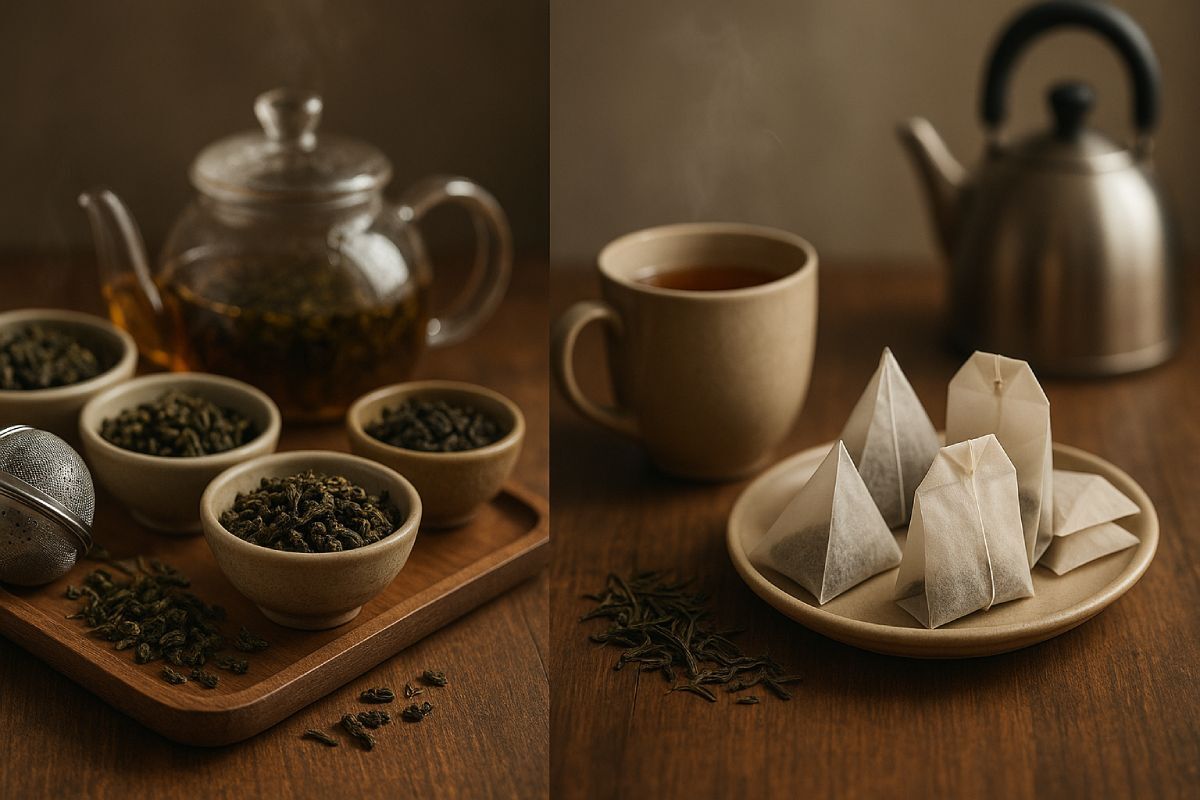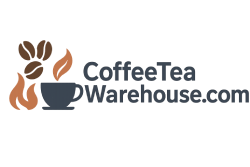
The packaging of your tea does more than just hold the leaves; it plays a crucial role in the freshness, flavor, and overall experience of your brew. The classic debate between loose leaf tea and tea bags often comes down to a balance of convenience versus craftsmanship. But with modern innovations changing the game, the choice is more nuanced than ever.
This guide will break down the pros and cons of each format, helping you understand the differences in quality, flavor, and brewing style so you can confidently choose the perfect tea packaging for any occasion.
The Connoisseur's Choice: Loose Leaf Tea
For centuries, loose leaf tea was the only way to enjoy this beloved beverage. It is widely regarded as the gold standard by tea enthusiasts for several key reasons. Loose leaf tea consists of whole or large, partial tea leaves, which provide a more complex and authentic flavor experience.
Why Choose Loose Leaf Tea?
- Superior Flavor and Aroma: Whole leaves retain their natural essential oils and aromatic compounds far better than the broken pieces found in most tea bags. During steeping, they have ample room to unfurl and expand, releasing their full, nuanced flavor profile without bitterness.
- Longer Freshness: With less surface area exposed to the elements, whole leaves degrade and oxidize much more slowly. When you learn how to store tea properly, loose leaf varieties will stay fresh and vibrant for much longer.
- Ability to Re-Steep: High-quality loose leaf teas, especially oolongs, greens, and whites, can be infused multiple times. Each steeping reveals a new layer of flavor, making it a more economical and enjoyable experience. -
Greater Variety:
- The world of specialty tea is most accessible through loose leaf, offering an incredible range of single-origin and artisanal blends that are rarely found in bag form.
While brewing loose leaf tea requires an accessory like a tea infuser, a French press, or a teapot with a built-in strainer, the small extra step is rewarded with an unparalleled cup of tea.
The Icon of Convenience: The Tea Bag
The tea bag was invented in the early 20th century and revolutionized the way the world drinks tea. Its pre-portioned, no-mess format makes brewing a quick and simple process, perfect for busy mornings, the office, or travel.
Understanding Tea Bags
Traditional, flat tea bags are typically filled with small particles of tea known as "fannings" and "dust." These are the byproducts of processing higher-grade loose leaf teas.
- The Trade-Offs: Because these particles have a huge surface area, they lose their freshness and flavor much more quickly. They also infuse very rapidly, which can lead to a harsh, bitter, and one-dimensional brew if steeped for too long.
- The Benefits: Their main advantage is undeniable convenience. There's no measuring or straining required, and cleanup is as simple as tossing the bag.
Modern Innovations: The Best of Both Worlds?
Recognizing the demand for both quality and convenience, the tea industry has developed innovative packaging that bridges the gap between loose leaf and traditional bags.
Pyramid Tea Sachets
These spacious, silky sachets are a significant upgrade from flat paper bags. Their pyramid shape allows for the use of larger, higher-quality tea leaves—closer to what you'd find in a tin of loose tea. This design gives the leaves plenty of room to expand and infuse properly, resulting in a much richer and more flavorful cup that rivals a loose leaf brew, all with the convenience of a bag.
Which Tea Packaging is Right for You?
The best choice ultimately depends on your lifestyle and priorities.
- Choose Loose Leaf Tea if: You prioritize flavor complexity, enjoy the ritual of brewing, want the ability to re-steep your leaves, and are interested in exploring the vast world of specialty teas.
- Choose Tea Bags if: Your top priority is speed, simplicity, and a mess-free experience. They are perfect for travel, the workplace, or when you need a quick, reliable cup.
- Consider Pyramid Sachets if: You want the high-quality flavor of loose leaf tea but with the grab-and-go convenience of a tea bag.
Frequently Asked Questions About Tea Packaging
Is loose leaf tea really better than tea bags?
From a flavor and quality perspective, yes, loose leaf tea is generally superior. It uses whole leaves that retain more essential oils and provide a more complex, nuanced taste. However, high-quality pyramid tea bags can offer a very comparable and satisfying experience.
Why are pyramid tea bags better than regular tea bags?
Pyramid tea bags are better because their shape allows for the use of larger, higher-quality tea leaves and gives those leaves more room to expand and infuse. This results in a much better flavor extraction, closely mimicking the experience of brewing loose leaf tea.
Can I reuse loose tea leaves?
Absolutely. Many high-quality loose leaf teas, particularly green, white, and oolong teas, are designed to be re-steeped multiple times. Each infusion will have a slightly different character, allowing you to enjoy the evolution of the tea's flavor.
Do tea bags go stale faster than loose tea?
Yes, the small tea particles in traditional tea bags have more surface area exposed to oxygen, causing them to go stale much more quickly than whole leaf loose tea. Proper airtight storage is essential for both but is especially critical for tea bags.
